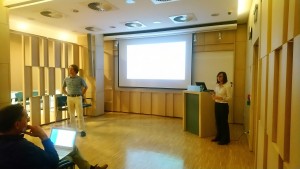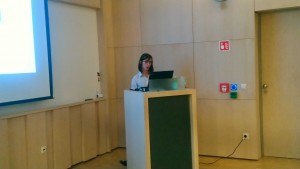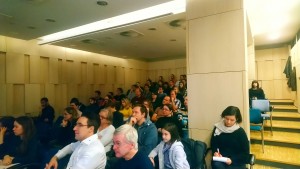Sanja Mikulovic from the German Centre for Neurodegenerative Diseases at Bonn gave a seminar talk at 29 October in the KOKI entitled On motion and emotion – neuronal circuits underlying locomotion and aversive behavior in the hippocampus/medial septum system. Sanja is finalizing her post-doc work in the Remy lab and starting her independent group at the Leibniz Institute for Neurobiology in Magdeburg. She has done exciting work on hippocampal theta oscillation, OLM interneurons and medial septum, which are of long-term interest to many of us.
Summary:
Hippocampus and medial septum play a pivotal role in movement control and emotional information processing. Theta oscillation (4-12 Hz) is one of the most prominent rhythms of the brain. Emerging research evidence points to the existence of several theta subtypes related to movement, cognition and emotion. Theta frequency has been shown to predict the intensity of subsequent locomotion, but also the processing of emotion-related stimuli. However, little is known about neuronal circuits underlying different types of theta rhythms. Here, I will present the role of oriens-lacunosum/moleculare expressing Chrna2 receptor (OLMα2) interneurons, that receive cholinergic input from the medial septum, regulate specific type of theta activity and control innate anxiety responses to predator odor. Furthermore, I will present the role of medial septum glutamatergic neurons in controlling locomotion speed and regulating different type of theta oscillations. Finally, I will show involvement of different hippocampal cell types in motor, appetitive and aversive learning, as revealed by 2 Photon imaging. Future perspectives will be discussed.
Besides her talk, Sanja had meetings with experts and students, she had a lunch with students and a dinner with the members of the Lendület Laboratory of Systems Neuroscience.


